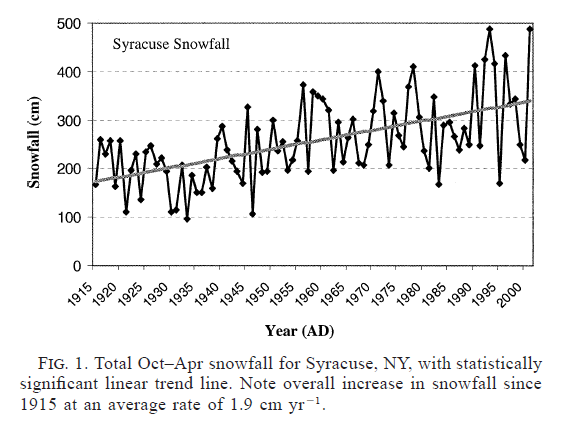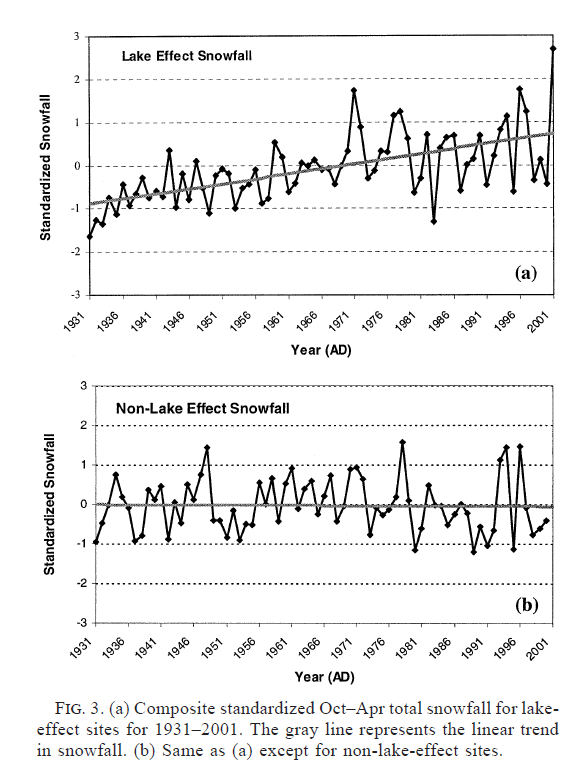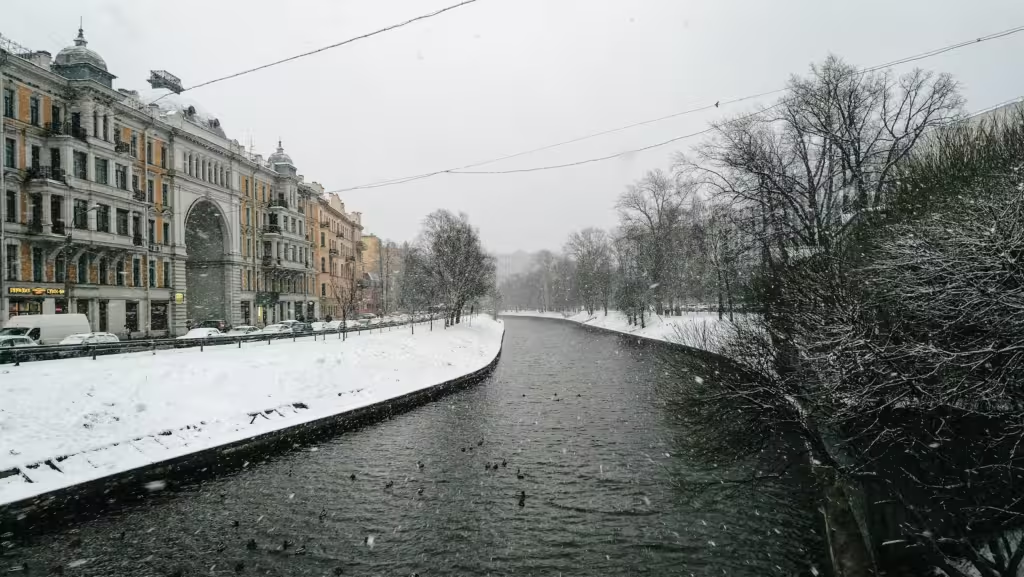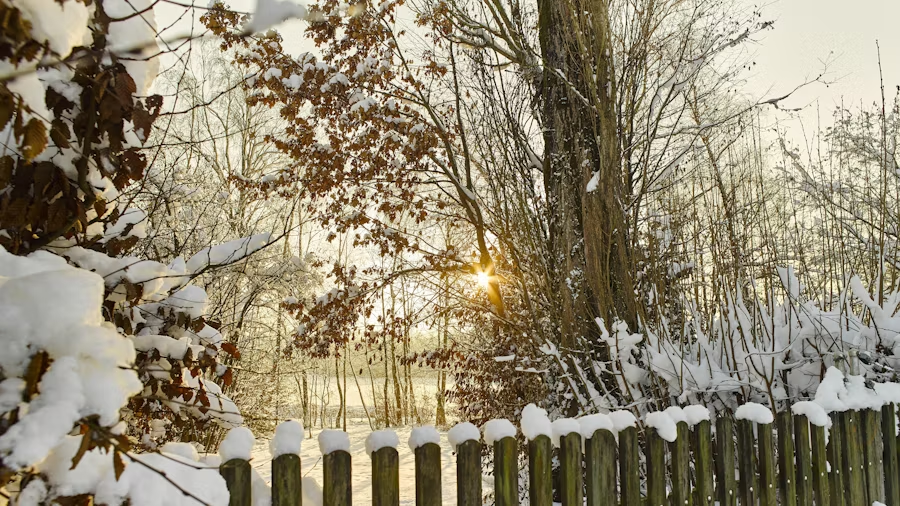You’ve all seen this one. A winter comes and goes with minimal snow cover, and the usual experts furrow their brows and tell us it’s just what they expected due to climate change. After all, everybody knows heat melts snow. Then the next year Jack Frost wallops us with snow that just won’t stop… and the same experts furrow their brows and explain that it’s just what they expected due to climate change. After all, everybody knows a warming Arctic destabilizes the polar vortex or something. And they’re right, in the limited and unsatisfactory sense that they did predict both (and neither) because in climate science you can #haveitbothways. Global warming means less snow is coming to the Great Lakes region while, on the other hand, global warming means we should expect more snow in the Great Lakes region. QED.
We’ll take the latter because we like snow. Up to a point, anyway. But love it or hate it, the puzzle of Great Lakes snowfall really does throw the alarmists for a loop. If the air warms a bit, climate models say there will be less precipitation of all types, rain or snow. And that could cause water levels in the Great Lakes to fall, wetlands to dry up and the ground to dry out.
Those results first emerged from a group of climate models discussed in a 1996 study. Now you might say, that’s 30 years ago so you can hardly blame them for not knowing what they were doing. Except by then the IPCC had already published reports claiming they knew exactly what they were doing with enough certainty that world leaders needed to take drastic steps. Sure enough the Kyoto Protocol was inked one year later, the first of many promises to slash greenhouse gas emissions and organize lavish international conferences to monitor their lack of progress at anything other than spending money.
As for the Great Lakes themselves, as we have shown before, their water levels go up and down without exhibiting any trends for over 100 years. Except to confound expectations, including that not long after the models warned about declining snowfall, the Great Lakes region experienced a string of its snowiest winters on record. Syracuse, in upper New York state, was particularly hard hit, capping a century of rising snowfall records:

This situation prompted another group of scientists to look at data from throughout the region, whereupon they discovered that on the windward side of the lakes there was no long term snowfall trend and on the leeward side there was an upward trend. So in general, more lake effect snow and otherwise no trend. “Lake effect” means the stuff generated when winter winds blow across the open surface of the Great Lakes, picking up cold moisture which then falls as snow over the land surfaces to the east:

Thus, notwithstanding the models, there was no long-term reduction in “ordinary” snowfall. But there was a long term increase in lake effect snowfall. And climate science being what it is, the authors of the lake effect study said that, actually, global warming could very well cause more lake effect snow in the future.
Except if it causes less. Because in climate science you can always #haveitbothways.


